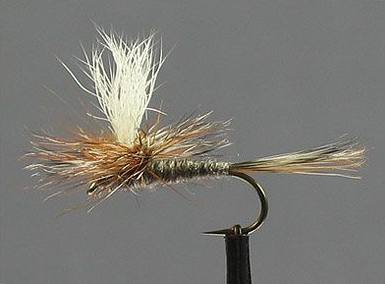
One of the worst things you can do to a dry fly is catch a fish on it! They slime it and submerge it and swim it around… Just in general, keeping a dry fly floating better and longer seems to be an ongoing quest for many fly tyers and fishers.
There are a number of factors that can go into how well and how long a dry fly continues to float high. Certainly the materials from which the fly is tied will play a big role, as will the skill of the angler. The more you allow your fly to drag across currents, rather than drift on them, the more waterlogged your fly will become. Where you are fishing will make a difference, too. It’s easier to keep a fly floating high in big, open rivers where false casting is an option than it is in a small, tight mountain stream. In any case, an endless number of products exist for this task. We lump them all into the category of “floatants.”
As with many products in the fly fishing world, if you ask ten different anglers which one is the best, it’s entirely possible that you will get ten different answers. Sometimes those answers will come in the form of a specific brand of floatant. Others will come in the form of a specific style. When it comes to brand, I believe that is a matter of personal preference and you’ll just have to try a few different ones to see if one in particular earns your loyalty. But when it comes to different styles of floatant, the specific task at hand may determine which will be best. In fact, you may want to have more than one style of floatant to perform different tasks. Listed below are a few different common styles of floatant and a description of how and when they might best be applied.
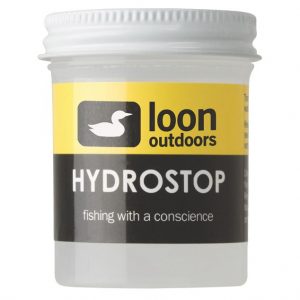
Liquid Floatants
While many anglers use them in different ways, liquid floatants are probably most useful before you ever get to the stream. Whether dry flies that you tie yourself or buy from a shop, you can use a liquid style floatant to “pre-treat” new flies in much the same way as you might “Scotchgard” your sofa. Exact application may vary. Read the recommendations for the specific brand you purchase. You typically soak the flies in the liquid for five minutes or so and dry them overnight. In theory, after application of the product, water will better bead and roll of the fly material rather than absorb into it.
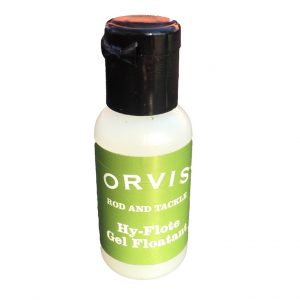
Gel Floatants
Gel floatants are probably the most common and popular style of floatant. They come in a small, very portable bottle and, like the liquid floatants, are designed to be a pre-treatment to an already dry fly. The big difference is gel floatants are designed to be used streamside, immediately before fishing the fly.
It is important that you don’t “over apply” the gel. Rub a small amount into the fly and any remove any excess. Gels are also frequently mis-applied – after a fly has already become waterlogged. If a fly is already saturated, applying a gel floatant will essentially trap moisture into the fly and make it worse.
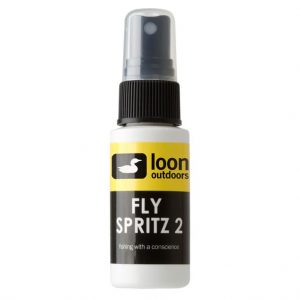
Spray Floatants
Also normally applied while the fly is still dry, spray floatants are basically just a variation on a gel floatant. Spray floatants come in a bottle with a pump top and apply much like you would spray an eyeglass cleaner. They are not as messy as the gel but are sometimes more challenging to completey coat the fly.
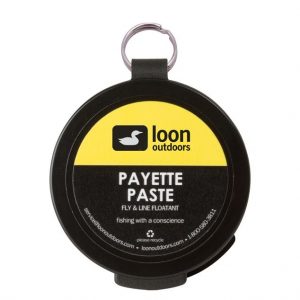
Paste Floatants
These are basically just a thicker version of a gel floatant. They really create a mess on smaller dry flies. Use paste for larger dries like hoppers and stoneflies. A lot of people prefer a paste floatant to apply to yarn strike indicators or even on a leader to keep it floating better.
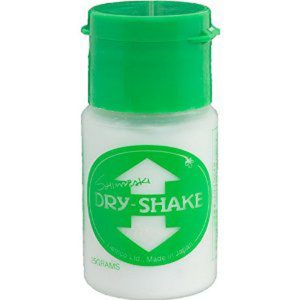
Powder Floatants
Use these less as a pre-treatment and more as a means to revive a saturated fly. As mentioned above, when a dry fly becomes oversaturated and begins to sink, applying a gel or spray can often make it worse by trapping moisture in. Powder floatants absorb and remove that moisture from a fly.
Typically they will come in a bottle with a wide, flip-top lid. Keep the fly, on the tippet, put it in the bottle and close the lid. Shake the bottle a few times to remove moisture from the fly.
At this point, there is a lot of debate on whether to re-apply a gel or spray type floatant. You’ll just have to find what works best for you. I usually don’t re-apply another floatant unless I’m using a synthetic (like foam) dry fly.
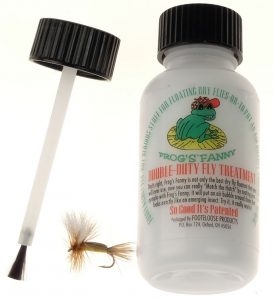
Brush Floatants
Brush floatants are essentially another version of a powder floatant. Rather than shaking the fly inside the bottle, use a small brush to apply the powder to the fly. Again, it’s personal preference but with brush floatants, expect a little frustration on windy days!
There are countless styles and floatants on the market today and all have their place. And unlike the homemade lighter fluid and paraffin concoctions of days gone by, they are typically odorless and environmentally friendly. You just need to find a system that suits your needs.
Personally, I carry a gel floatant for pre-treating dry flies and a “shake style” powder for reviving them and get by just fine. But I offer the disclaimer that I often offer in these newsletter articles… This is just one man’s opinion!


Just a note to anglers looking for a good conservative choice for a powder floatant: Bohning Feather-Dri, which is less pricey for larger quantity and very similar to other dry fly powder. It’s designed to waterproof arrow fletching (feathers), so . . . . .
(Rob — Really enjoy your informative website)
Thanks, Jerry!